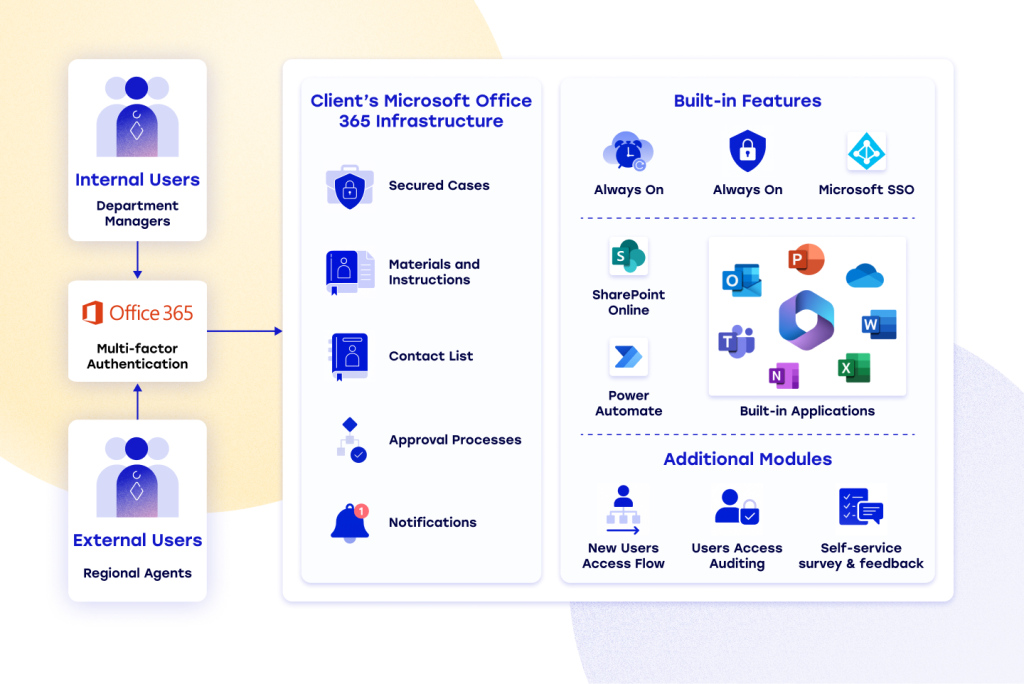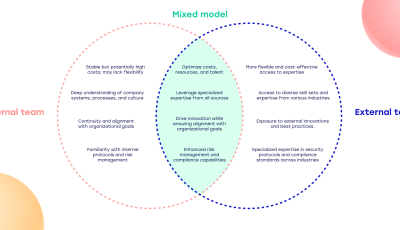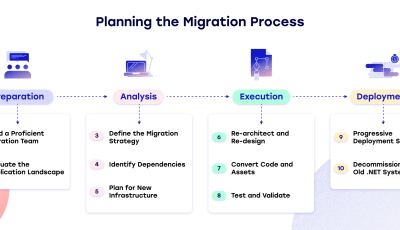Introduction
MS SharePoint, part of the Microsoft 365 suite, is a versatile platform that supports secure information management, team collaboration, and business process automation. It allows users to create tailored team sites, manage content securely, and streamline workflows through seamless integration with other Microsoft 365 tools. This case study highlights a custom SharePoint-based solution developed by Helmes for a multinational financial organization. The client required a secure, compliant digital platform to manage sensitive information and documentation, which enables collaboration with external agents operating across more than 20 countries. The solution addresses critical communication and data security challenges, transforming the organization’s international and external collaboration processes.
Client Challenges
A global financial organization with a dedicated network of external regional agents was facing low engagement in its international initiatives. One of the key challenges was the ineffective distribution of information to agents across different regions. The issues were compounded by overlapping content and frequent updates, making it challenging to ensure everyone received the latest and most relevant information. Due to business constraints, communication between agents was minimal, and the absence of a centralized system led to fragmented messaging, slow response times, and missed updates. As a result, the organization experienced client dissatisfaction, reduced operational efficiency, and increased indirect costs.
The main reasons for the issues stemmed from ineffective, delayed, and insecure methods of sharing information among regional agents, as well as the lack of a unified platform for distributing shared information and monitoring changes.
Following a thorough collaboration and discovery phase between Helmes and the client, several additional features and prerequisites were identified that caused this situation in the process:
- The distribution of sensitive information between department managers and external agents was conducted solely by e-mail. This method rendered it technically impossible to provide a “read-only” option for confidential materials, as recipients could still download and save these materials to their devices.
- There was no automated process for distributing information, and department managers had to manually share necessary information with each region individually, managing this task personally for every instance.
- The maintenance and control of distributed information are complicated by the fact that information access is multi-level. This means that different roles within each country’s representatives should have access only to specific documentation or metadata. The lack of non-automated control and auditing of this distributed information can lead to human errors and issues in the dissemination of information.
- Department managers frequently encountered extended preparation times for content, difficulties in organizing centralized content, and challenges in efficiently updating it.
- With the implementation of a new security policy as part of the company’s digital transformation, managers were required to completely abandon traditional communication channels for distributing sensitive data, as these methods no longer aligned with the updated corporate guidelines.
- Additionally, storing information on local media without backups posed a significant risk; if the local media failed, it could result in the loss of the agents’ work. Restoring the original information piecemeal would require repeated, tedious work.
Solution Part 1: Analysis of business cases and the client’s process needs
While collaborating with the client, our Helmes team identified the root causes of the issues mentioned and conducted a thorough review of the initial environment. We then discussed the anticipated outcomes and success criteria for the business. Leveraging our extensive experience in solutions delivery, we evaluated the options of either building a custom system from scratch using popular frameworks or utilizing Microsoft SharePoint. After analyzing the client’s current conditions and timeline, we proposed leveraging their existing Microsoft 365 infrastructure to develop a solution based on SharePoint Online.

Solution Part 2: What our team accomplished
After agreeing on the business outcomes, we reviewed the specific project objectives. To meet these expectations, we engaged our full-stack development team, which included SharePoint experts and solution analysts. As a result, the following technical solutions and approaches were implemented:
Security and Compliance:
- Developed a secure SharePoint Online site collection in compliance with strict security protocols.
- Implemented dynamic redistribution of permissions for groups on specific items to effectively manage access to sensitive information and ensure appropriate access levels.
- Applied Power Automate solutions with secured connections to data sources and services, authenticated through OAuth. This approach ensured that only authorized users and applications could access the data, with authentication tokens managed by Microsoft’s security infrastructure.
- Enabled Multifactor Authentication (MFA) for internal and external users.
Automation and Workflows:
- Integrated out-of-the-box SharePoint Online document versioning and approval workflows with related Power Automate flows.
- Developed a module for managing external users, enabling the addition, updating, blocking, and deletion of users while controlling their permission levels through a form created with Microsoft Forms. Microsoft Forms was chosen over SharePoint Framework and PowerApps forms for this case because it offers a simpler development and management approach while maintaining security standards.
- All background processes for maintaining users’ permissions within the SharePoint site and its data structure are managed by Power Automate flows. These flows have been designed to the highest standards to minimize the risk of errors in the platform’s business logic, enabling easy maintenance and smooth operation by the platform administrator.
- Additionally, flexible management of email notification templates can now be conducted directly from the SharePoint Online site.
Custom Tools Development (SharePoint framework):
- Developed custom tools for data validation and bulk data import from Excel files to streamline data management processes, including data updates.
- Created both manual and automated auditing tools for monitoring users and groups on the site, enhancing oversight and compliance in accordance with the customer’s internal information security policies. These custom tools were built following the latest SharePoint framework standards, allowing the development patterns recommended by Microsoft Documentation. Helmes leveraged technologies such as ReactJS, TypeScript, HTML, and CSS throughout the development process. Designed with rigorous code quality standards, these tools ensure high readability, modularity, and scalability, which allows for long-term maintainability and smooth functionality. The user interface is designed to be modern, intuitive, and aligned with the SharePoint aesthetic, offering users a seamless experience.
Licensing and Cost Efficiency:
- We implemented Power Automate Flows using standard connectors to eliminate the need for premium licenses for users, including service accounts. We achieved this through a simple yet effective solution: creating a SharePoint list item and tracking its creation rather than using the Premium HTTP connector. As a result, we were able to utilize the Office 365 E5 license without any upgrades or security breaches.
Documentation and Deployment processes:
- Detailed step-by-step technical guides, documentation, and PowerShell scripts were carefully crafted to ensure the smooth deployment of various customer environments (Dev, Stage, Production). These resources aimed to reduce manual effort and save time during the setup process. They addressed multiple aspects, such as multilingual settings, data structures, user groups, site page structures, and page layouts, while ensuring comprehensive process logging.
Final project outcomes: Our improvements to client processes
In the first quarter following the platform’s launch, communication efficiency and information distribution improved by 30%, resulting in a significant reduction in delays and missed updates.
By implementing a secure SharePoint Online site with automated workflows, we centralized communication, ensuring timely and seamless information sharing with version control and streamlined approvals.
(Fragmented Communication and Delays in Information Sharing – SOLVED)
- The client’s workflows have been aligned with internal security policies and local legal requirements, which reduces the risk of unauthorized modifications and data leaks.
By implementing dynamic permission management, we ensured that documents could be accessed in read-only mode, thereby safeguarding sensitive information.
(Lack of “Read-Only” Access for Sensitive Materials – SOLVED) - Our platform has helped department managers to optimize their routine operations, resulting in approximately a 15% time savings.
This has led to an overall increase in the speed of content preparation. By introducing bulk data import and validation tools, we have simplified content management, thereby saving time and improving efficiency.
(Extended Content Preparation Times – SOLVED) - Customer regional agents now receive up-to-date information from headquarters promptly, which has reduced communication delays by about 50%.
By automating distribution processes, we decreased manual effort and ensured the efficient and timely delivery of materials.
(Manual and Time-Consuming Material Distribution – SOLVED) - Security risks related to information distribution and access management across countries and regions have been significantly reduced.
By automating permission controls, we provided the customer with precise access levels based on user roles, which minimized human errors.
(Complex Multi-Level Access Management – SOLVED) - The risks of uncontrolled information distribution within departments were significantly reduced, enhancing overall data security.
By centralizing all communication within SharePoint, we ensured compliance with corporate policies and secure data sharing.
(Non-Compliant Communication Channels – SOLVED) - The customer benefited from the advantages of cloud infrastructure, including automated backups and archiving, which eliminated the risk of data loss due to hardware failures.
By migrating to a secure, cloud-based SharePoint system with built-in redundancy, we ensured uninterrupted operations and data safety.
(Reliance on Local Media Without Backups – SOLVED) - The client successfully implemented an audit policy that enhanced compliance and provided transparency in user activities.
By introducing custom auditing tools, we enabled real-time monitoring and ensured adherence to internal security guidelines.
(Lack of Monitoring and Compliance Tools – SOLVED) - Additionally, the Helmes team prepared comprehensive user and administrator guides, as well as conducted staff training to ensure seamless adoption and efficient use of the platform.
Interested in transforming your organization’s workflows?
Contact us to explore how SharePoint Online can revolutionize your processes.
Get in touch




